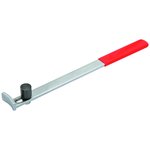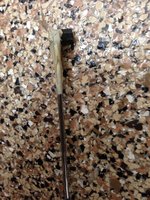Kent recommends dielectric grease
And read this, still disagree.........
I've been using it on plug boots for years, and cap boots
Those suckers are already on there tight enough
Dielectric grease[edit]
Dielectric grease is electrically
insulating and does not break down when high voltage is applied. It is often applied to
electrical connectors, particularly those containing rubber gaskets, as a means of lubricating and sealing rubber portions of the connector without
arcing.
A common use of dielectric grease is in high-voltage connections associated with gasoline engine spark plugs. The grease is applied to the rubber boot of the plug wire. This helps the rubber boot slide onto the ceramic insulator of the plug. The grease also acts to seal the rubber boot, while at the same time preventing the rubber from becoming stuck to the ceramic.















